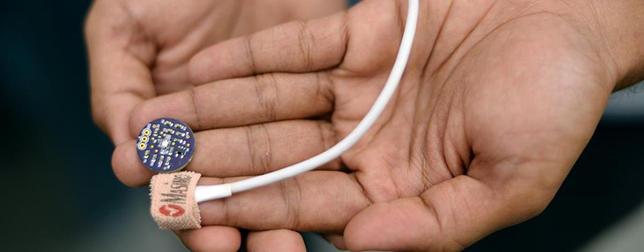A Vancouver, British Columbia startup is developing a device that drug users can wear on their wrist or finger to prevent drug overdose.
Around 28 people a week died of drug overdose in British Columbia last year, bringing the total to 1,448. The first three months of this year saw that number rise past 30 deaths a week, 91 per cent of them indoors and alone.
Gordon Casey and biomedical engineer Sampath Satti decided to do something about this unnatural deaths so they planned to invent a system that could help drug users from overdosing. Casey poured $50,000 of his earnings into this tech startup aimed at saving lives in the opioid crisis.
“What if there was a local alert system that, when someone is using and an overdose episode occurs, we look at the physiological changes that happen in the human body and elicit a local response?” Casey told StarMetro in an interview.
Read more German Researchers Develop Sensor-Packed Wristband to Improve Lives of Dementia Patients
A team of engineers led by Satti are developing software for the device that is essentially a pulse monitor. With the software the device will be able to calculate users’ breathing rate based on very slight variations in their pulse. If the device detects a slow pattern of breathing it will send an alert, as slowed breathing is one of the first symptoms of an overdose.
“Heart rate does slow down eventually,” Satti said, “but by then it’s too late.”
Once a suspected overdose is detected, the device would alert either health authorities or a network of volunteers to rush to the person’s side and administer Nalaxone, an antidote used to block the effects of opioids, especially in overdose.

A prototype of the wearable device has been developed by Satti’s team. They’re working to collect enough data to establish the exact relationship between heart rate and breathing.
“We estimate that once this device actually gets built, this device will be cheaper than a Naloxone kit,” Satti said.
However, 25-year-old Master’s student at the University of B.C. and a few engineers at the university aren’t getting paid for their work. So they decided to make the technology open-source.
Read more Imec Develops Novel Organ-on-Chip Device to Improve Drug Screening
Satti recently joined Casey’s company Brave in Vancouver’s Chinatown. Brave is a co-operative with 14 founding members and 50 pending members who are either users, or contributors – app developers, engineers, or community workers. Every member is a shareholder.
Brave is preparing for a four-week pilot project in July, in which 80 participants, who are frequent drug users, will test their prototype app dubbed “Be Safe.”
The app anonymously connects drug users with their peers who can monitor them via a phone call while they use. That peer would only get the drug users’ location if he or she does not respond on the phone, signaling a possible overdose.












